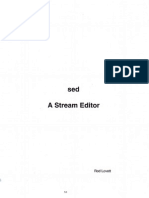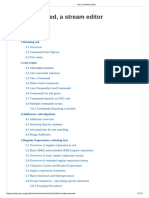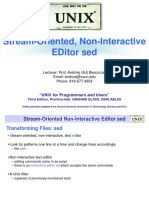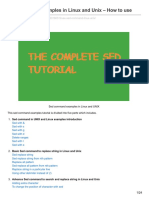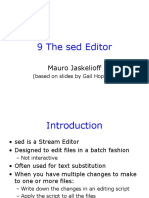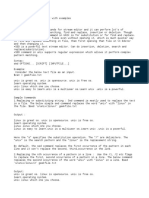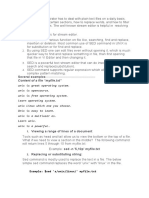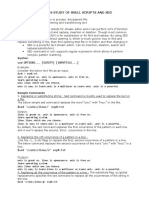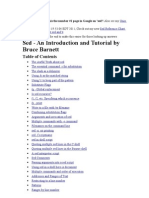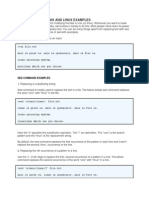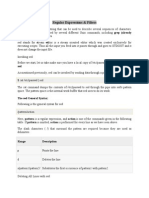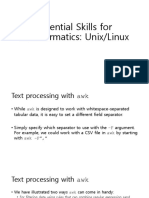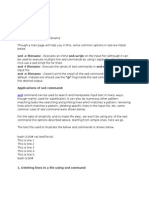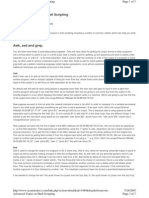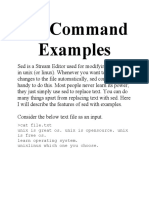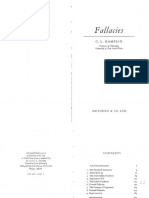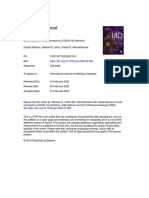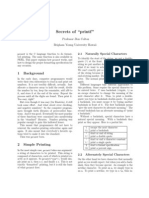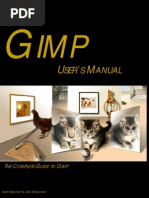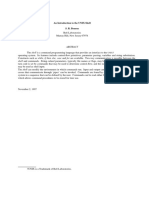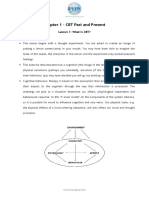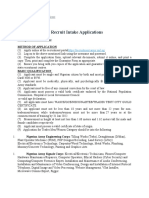0% found this document useful (0 votes)
59 views10 pagesSed - A Non-Interactive Text Editor
Sed is a non-interactive text editor for Unix that allows editing files too large for interactive editing or when editing commands are too complex. It runs editing commands on each line and can perform multiple global edits in one pass through the input file. The document outlines Sed's overall operation, command line flags, order of applying commands, and addresses for selecting lines.
Uploaded by
luckydexxxCopyright
© © All Rights Reserved
We take content rights seriously. If you suspect this is your content, claim it here.
Available Formats
Download as PDF, TXT or read online on Scribd
0% found this document useful (0 votes)
59 views10 pagesSed - A Non-Interactive Text Editor
Sed is a non-interactive text editor for Unix that allows editing files too large for interactive editing or when editing commands are too complex. It runs editing commands on each line and can perform multiple global edits in one pass through the input file. The document outlines Sed's overall operation, command line flags, order of applying commands, and addresses for selecting lines.
Uploaded by
luckydexxxCopyright
© © All Rights Reserved
We take content rights seriously. If you suspect this is your content, claim it here.
Available Formats
Download as PDF, TXT or read online on Scribd
/ 10

